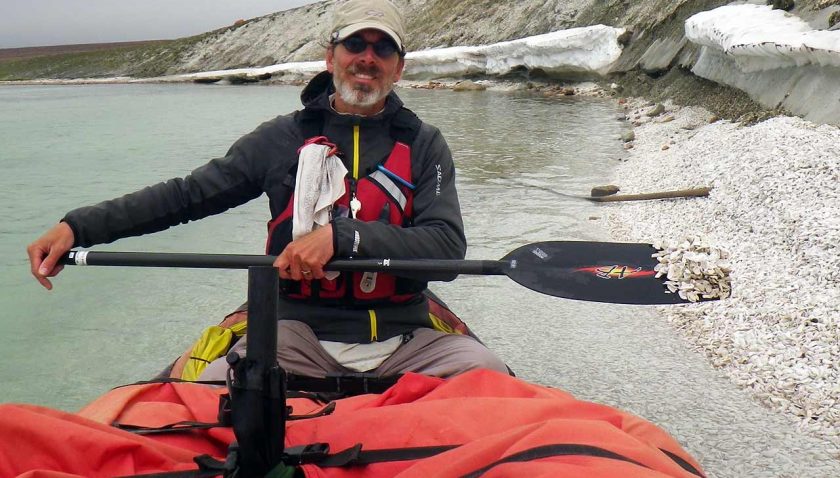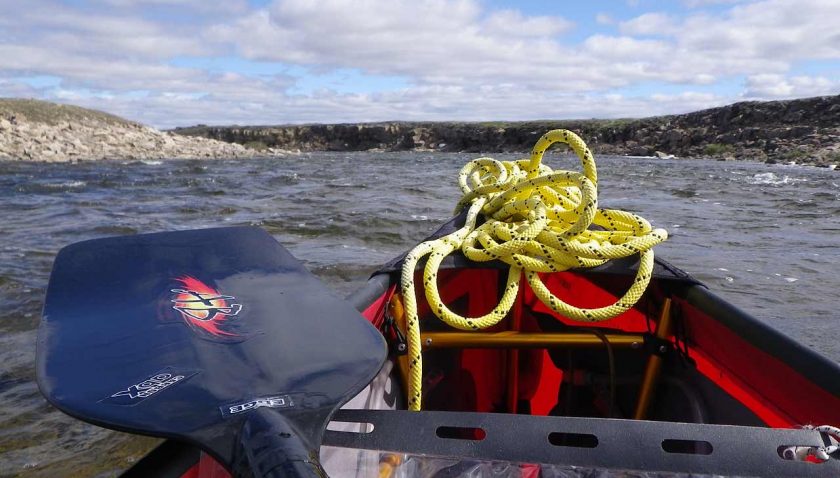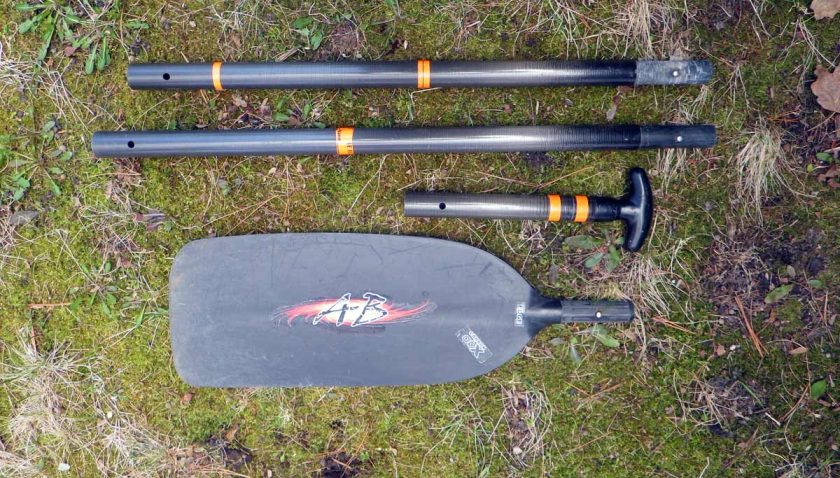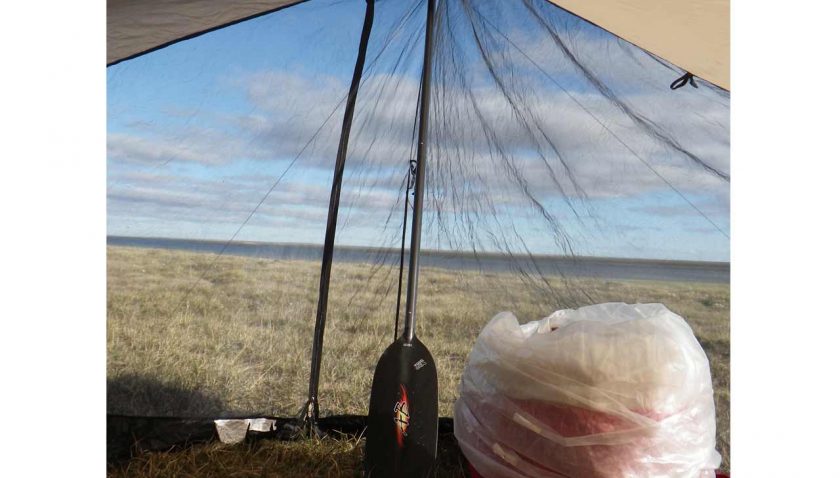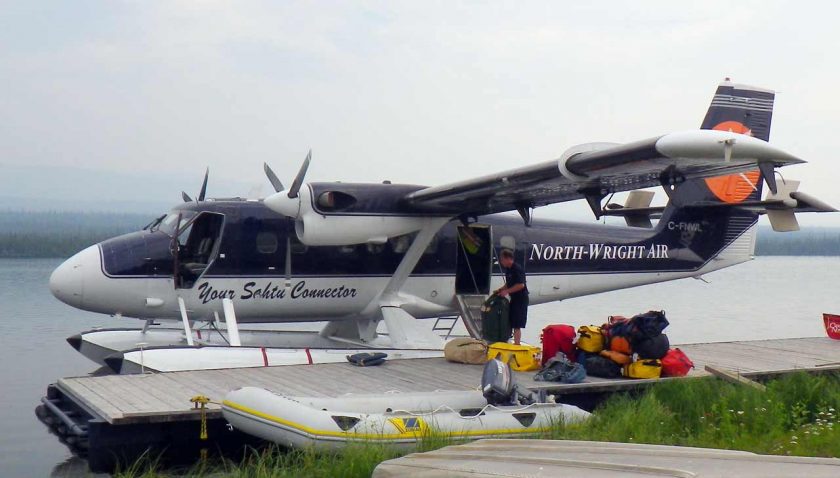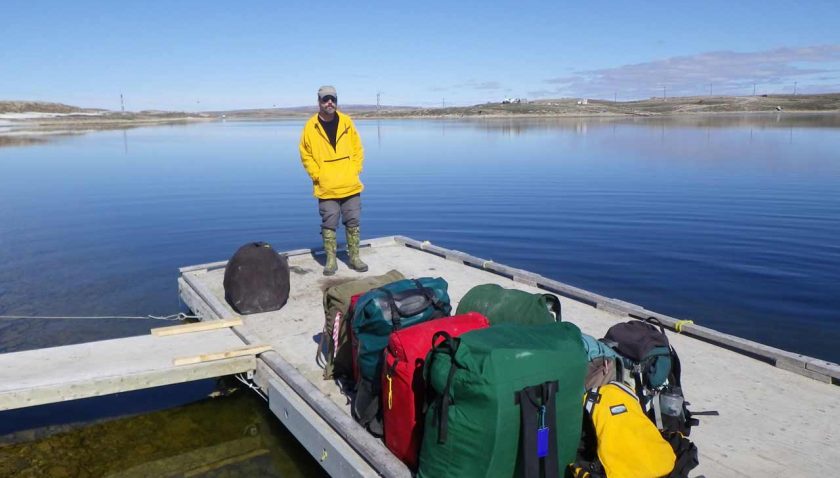Review: Aqua Bound Edge Sectional Canoe Paddles for Far North/Air Travel
By Jim Gallagher
Air travel, whether by commercial airline or by charter, is the most expensive part of a canoe expedition to any far off corner of the world. Checked baggage is no longer free and air cargo fees are expensive. As a far north paddler, I’ve looked for ways to make my traveling outfit more concise and less expensive to ship while still meeting the demands of canoeing remote rivers and lakes.
Brian Johnston of Manitoba and I have been traveling as a twosome on Arctic rivers since 2013. Besides using a 17 ft. Pakcanoe – a packable high-volume expedition-worthy canoe, we are using two and three piece Aqua Bound Edge paddles to move our canoe down far north waterways. Edge paddles are designed for performance whitewater paddling. The two and three piece models are perfect for packing into checked luggage or packs.
Aqua Bound Edge paddles are constructed entirely of carbon fiber and carbon resin materials. The ferrules joining paddle sections are cut to very high tolerances. The result is a very strong and rigid paddle. The Edge has a slightly curved 8” wide blade. In use, there is no wobble between the sections – either on flatwater or in challenging whitewater conditions.
When disassembled, the longest piece from our compliment of sectional paddles is 28” for a two piece 56” paddle. Each piece can be easily slipped into a pack for air travel. Sections from the three piece models are even shorter – 25” at the longest for a 56” paddle.
To save on weight, Brian and I bring three paddles – one each to use and one spare in case we break or lose one. The combined weight of our three paddles is 5 pounds. Our time on canoe expeditions can be measured in years and we have covered thousands of miles on the water. Neither of us has lost or broken a paddle. Bringing just one spare is a calculated risk.
For the three piece paddle that I own, I requested an additional shaft section that is two inches longer. The result is that I have a paddle that could be either 54″ or 56″. Putting both shaft sections on the paddle allows it to be used as a pole 79” in length to prop up the Mantis tundra tarp that we use for a cooking/wind/bug shelter. The extra section weighs only ounces compared to pounds for a metal extendable pole.
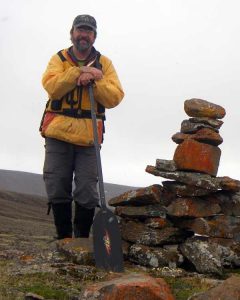
Jim Gallagher stands alongside an inukshuk (a rock cairn) on the Kuujjua River, Nunavut.
A few paddlers have asked me about the lack of a bent shaft on the Edge. I guess this might be another trade-off for weight and portability, but I have never missed a bent shaft paddle when using the Aqua Bound Edge – even after paddling long days on flat water. The Edge is easy to swing and the blade pulls a lot of water. I’m fine leaving my carbon bent shaft at home on far north trips.
I like gear that works and lasts a long time. I find comfort in using gear that is familiar from use. The corners of my Edge paddle blades have become rounded after four seasons of honest use in the Arctic. These paddles have earned a place alongside my other favorite equipment – ready for my next trip north.
Jim Gallagher is the veteran of seventeen canoe expeditions in the Arctic and Subarctic of Canada, including two modern first descents of barren lands rivers and other little known routes in the far north. He writes, paddles, skis, and works on old wooden canoes at his home near Bemidji, MN.



